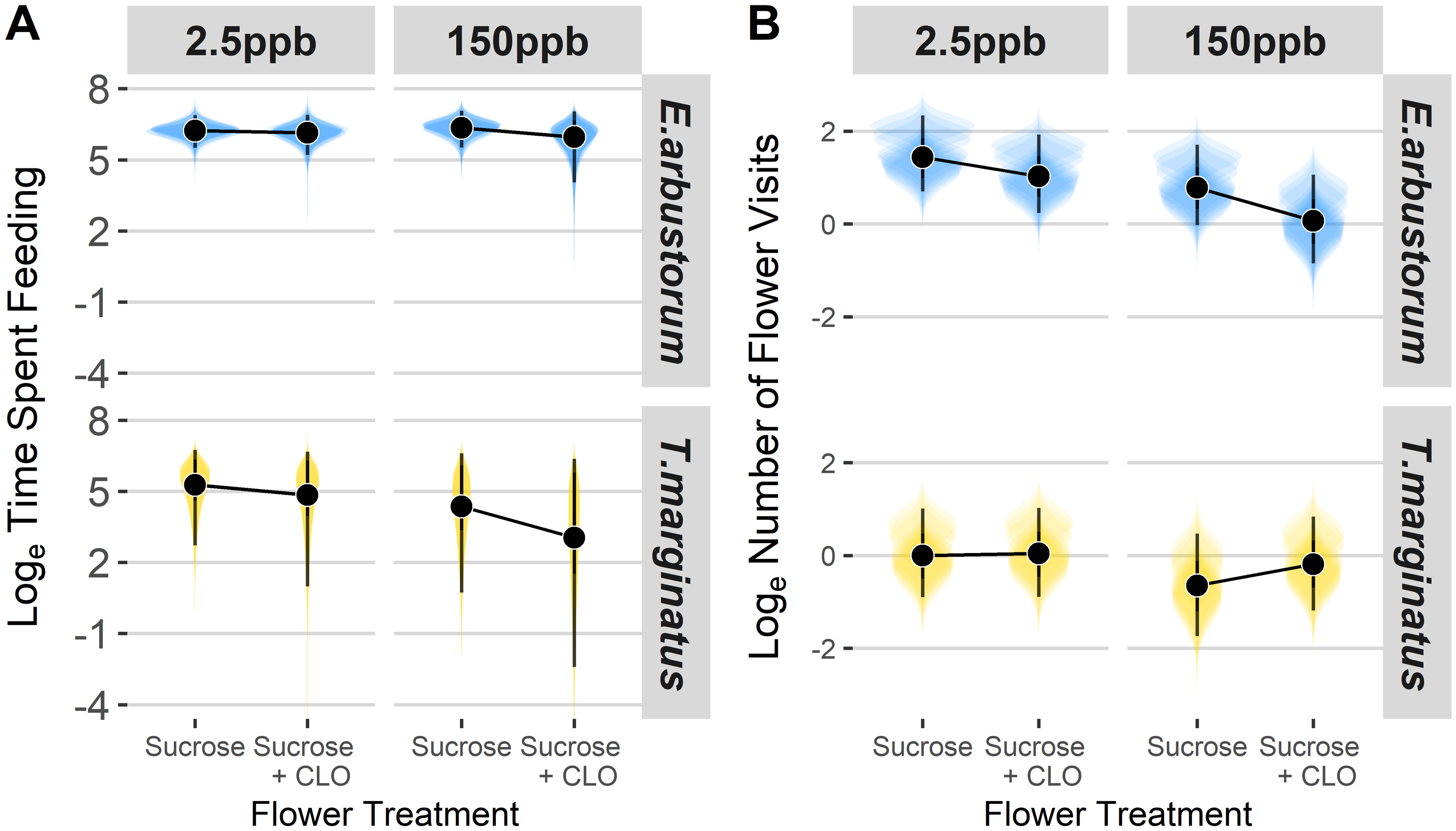
Can anthophilous hover flies (Diptera: Syrphidae) discriminate neonicotinoid insecticides in sucrose solution?
Abstract
Understanding how neonicotinoid insecticides affect non-target arthropods, especially pollinators, is an area of high priority and popular debate. Few studies have considered how pollinators interact and detect neonicotinoids, and almost none have examined for these effects in anthophilous Diptera such as hover flies (Syrphidae). We investigated behavioral responses of two species of hover flies, Eristalis arbustorum L. (Eristalinae) and Toxomerus marginatus Say (Syrphinae), when given a choice between artificial flowers with uncontaminated sucrose solution and neonicotinoid-contaminated (clothianidin) sucrose solution at field-realistic levels 2.5 ppb (average) and 150 ppb (high). We examined for 1) evidence that wild-caught flies could detect the insecticide gustatorily by analyzing amount of time spent feeding on floral treatments, and 2) whether flies could discriminate floral treatments visually by comparing visitation rates, spectral reflectance differences, and hover fly photoreceptor sensitivities. We did not find evidence that either species fed more or less on either of the treatment solutions. Furthermore, T. marginatus did not appear to visit one of the flower choices over the other. Eristalis arbustorum, however, visited uncontaminated flowers more often than contaminated flowers. Spectral differences between the flower treatments overlap with Eristalis photoreceptor sensitivities, opening the possibility that E. arbustorum could discriminate sucrose-clothianidin solution visually. The relevance of our findings in field settings are uncertain but they do highlight the importance of visual cues in lab-based choice experiments involving insecticides. We strongly encourage further research in this area and the consideration of both behavioral responses and sensory mechanisms when determining insecticidal impacts on beneficial arthropods.
Contribution: Statistical analyses, tables and figures, and spectroscopy.